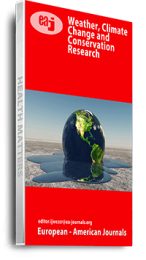Water scarcity in northern Ethiopia, as well as its socio-economic relevance in terms of water demand for agriculture and domestic use, are at the root of the search for new groundwater resources and the development of groundwater models that can be used to control and manage the resource. WetSpass-MODFLOW was used to estimate groundwater recharge in the Hormat-Golina sub-basin. The purpose of this study was to determine the amount of groundwater recharge in the Hormat-Golina sub-basin. Following that, the MODFLOW groundwater flow simulation model is utilized to simulate the hydraulic head distribution. The Steady-state groundwater flow calibration was determined by comparing measured and simulated hydraulic heads. The mean annual evapotranspiration, surface runoff, and groundwater recharge, according to WetSpass result, were 516.6, 204.9, and 35.6 mm, respectively. Groundwater recharge accounted for 4.7% of precipitation, while actual evapotranspiration and surface runoff accounted for 27%t and 68% of precipitation, respectively. In such seasonal variations (summer, winter and annual), the groundwater head distribution is 9.37 to 29.86m in winter (dry season), 9.53 to 29.89 m in summer (wet season), and 9.58 to 30.17 m in Annual stress periods (recharges). For all stress periods, the estimated hydraulic heads in steady-state fit well with the measured ones, with a correlation coefficient of 0.86 (summer, winter and annual recharge). The balance between groundwater recharge and expected abstraction rates for agriculture and domestic water supply must be considered in future groundwater resource development plans in the valley to ensure the resource’s long-term sustainability.
Keywords: Ethiopia, MODFLOW, groundwater recharge, hormat-golina, wetspass

